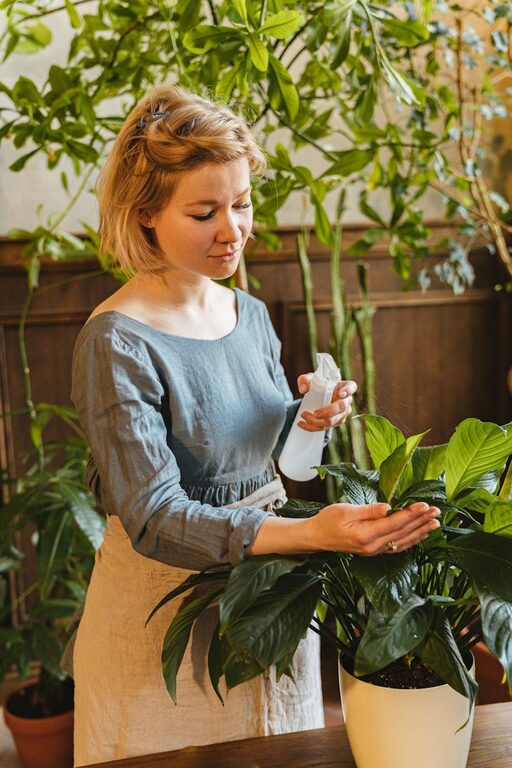Bringing houseplants into your living space can brighten up your home and improve air quality. However, keeping them healthy requires a bit of knowledge and regular care. Whether you are a seasoned plant parent or just starting out, these tips will help ensure your houseplants thrive.
Understanding Your Plant’s Needs
Each plant species has unique requirements. The first step to healthy houseplants is understanding what each one needs.
Light
One of the most important factors for plant health is light. Some plants thrive in bright, direct sunlight, while others prefer low or indirect light.
– Bright light plants: Succulents, cacti, and most flowering plants need several hours of bright light daily.
– Low light plants: Snake plants, pothos, and philodendrons tolerate or prefer shaded corners.
Place your plants accordingly to avoid leaf burn or leggy growth.
Watering
Overwatering is a common mistake and can harm plants as much as underwatering.
– Check the soil moisture before watering. Stick your finger about an inch into the soil.
– Water only when the top layer feels dry.
– Use pots with drainage holes to prevent waterlogging.
Consistency is key. Most houseplants do well when watered once a week, but adjust depending on the plant type and season.
Humidity and Temperature
Many houseplants enjoy moderate humidity and temperatures between 65-75°F (18-24°C).
– Increase humidity by misting leaves, grouping plants together, or using a humidifier.
– Avoid placing plants near air conditioners, heaters, or drafty windows that cause temperature fluctuations.
Choosing the Right Soil and Pot
Healthy roots are the foundation of a thriving plant.
Soil
Use a well-draining potting mix appropriate for your plant type. For example:
– Succulents and cacti need sandy, gritty soil.
– Tropical plants prefer a peat-based mix that retains some moisture.
Avoid garden soil, which may compact indoors and restrict root growth.
Pots
Select pots slightly larger than the root ball with drainage holes.
– Too large pots can lead to water retention.
– Terra cotta pots absorb excess moisture and improve airflow, ideal for most plants.
Repot plants every 1-2 years to refresh soil and avoid root crowding.
Feeding Your Plants
Indoor plants benefit from feeding during the growing season (spring and summer).
– Use a balanced liquid fertilizer diluted to half strength every 2-4 weeks.
– Slow-release pellets can also be convenient.
– Reduce or stop fertilizing in fall and winter when many plants rest.
Follow fertilizer instructions carefully to avoid overfeeding, which can damage roots.
Regular Maintenance Tasks
Keeping plants healthy takes a bit of daily or weekly care.
Pruning and Cleaning
– Remove dead or yellowing leaves to prevent disease spread.
– Pinch back growth to encourage bushier plants.
– Wipe leaves regularly with a damp cloth to remove dust and allow better photosynthesis.
Pest Prevention
Common indoor plant pests include spider mites, aphids, and mealybugs.
– Inspect leaves regularly, especially the undersides.
– Isolate new plants before introducing them to your collection.
– Wash affected plants or use insecticidal soap if pests appear.
Monitoring Plant Health
Keep an eye out for signs of stress:
– Wilting or drooping leaves may mean watering issues.
– Discoloration or spots can indicate fungal or pest problems.
– Slow growth or leaf drop might reflect light or nutrient deficiencies.
Creating the Right Environment
Houseplants flourish in environments tailored to their needs.
– Rotate plants every week to ensure even light exposure.
– Group plants with similar moisture and light needs together.
– Use plant stands or shelves near windows to maximize light and space.
Troubleshooting Common Problems
Sometimes problems arise despite your best efforts. Here are quick fixes for common issues:
| Problem | Cause | Solution |
|———————|—————————-|———————————|
| Yellow leaves | Overwatering, low light | Adjust watering, move to better light |
| Brown leaf tips | Low humidity, salts buildup | Increase humidity, flush soil |
| Leggy growth | Insufficient light | Move closer to light source |
| Drooping leaves | Underwatering or root issues| Check soil moisture, repot if needed |
| Pest infestation | Poor air circulation | Clean plants, apply safe pest control |
—
By following these tips, you can create a happy, healthy environment for your houseplants. Remember, consistent care and attention are key to seeing your indoor garden flourish. Enjoy the beauty and benefits that come with nurturing your green companions!



